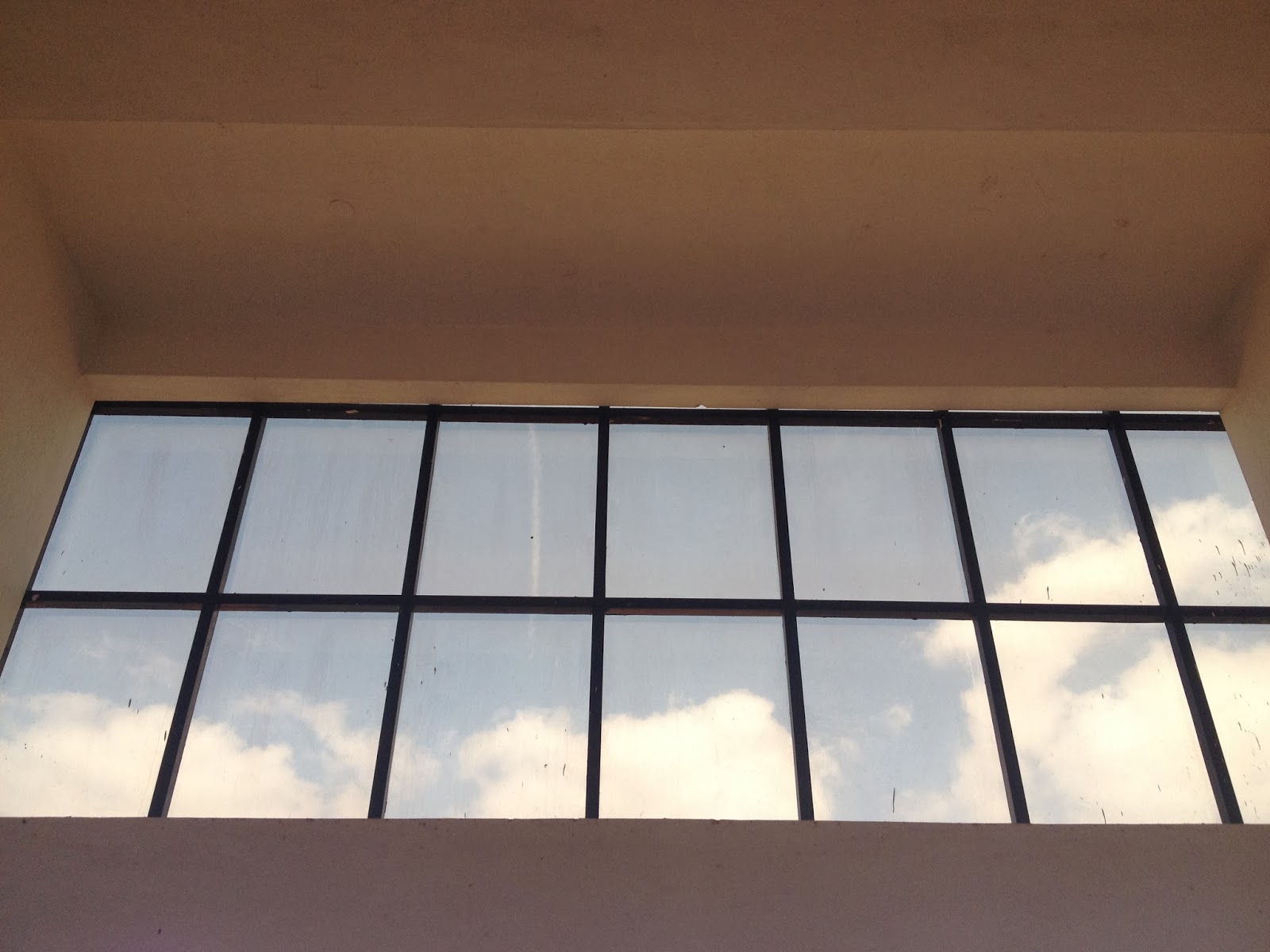Postmodernism has always been a term that perked my interest, be it in the context of literature, film or art. Installation art, in particular, struck me as fascinating because it appears to subscribe directly to postmodernism today - shedding certain concrete ideas about medium and expression to adopt undeniably newer ideas such as using body and space and objects as a medium. The idea appeared to make expression somehow more honest, more direct: make the relationship between the art and the artist as simplistic and strong as that between man and space.
This was one of the things we discussed on the first day of the course - and we came to the conclusion that the "material" in an art work is only employed once it has become the artist's medium. Therefore the artist takes raw material, and in using it to create art, makes it his medium. Therefore this material can be anything. We walked up and down the tables in our classroom, and had that exercise been immortalized in photograph or video, it could've been art. It could've been a performance. Our bodies, the classroom, the tables: these were material. In using them to convey ourselves, me could make these things mediums.
So it becomes a question of choosing material in a world that is a pure array or raw material: what does it take to make a material a medium? Is it necessary to possess this material, mold it with years and years of time and effort, or is it enough to simply choose it, make it yours, title it, interpret it, imbibe it? Where does one draw the line?
As an ironic sort of contradiction to everything we'd discussed previously, we set out to find a space in the building - change nothing about the space - but simply illustrate it as if it were our "installation", and write an artists note about it. This was to take reality and pretend it had been carefully simulated by us, to convey what we wanted to convey. This was to project ourselves onto the surface of something that already existed, and it was a fascinating exercise.
We chose a spot on the basement, that had futuristic windows and ceilings.
This was one of the things we discussed on the first day of the course - and we came to the conclusion that the "material" in an art work is only employed once it has become the artist's medium. Therefore the artist takes raw material, and in using it to create art, makes it his medium. Therefore this material can be anything. We walked up and down the tables in our classroom, and had that exercise been immortalized in photograph or video, it could've been art. It could've been a performance. Our bodies, the classroom, the tables: these were material. In using them to convey ourselves, me could make these things mediums.
So it becomes a question of choosing material in a world that is a pure array or raw material: what does it take to make a material a medium? Is it necessary to possess this material, mold it with years and years of time and effort, or is it enough to simply choose it, make it yours, title it, interpret it, imbibe it? Where does one draw the line?
As an ironic sort of contradiction to everything we'd discussed previously, we set out to find a space in the building - change nothing about the space - but simply illustrate it as if it were our "installation", and write an artists note about it. This was to take reality and pretend it had been carefully simulated by us, to convey what we wanted to convey. This was to project ourselves onto the surface of something that already existed, and it was a fascinating exercise.
We chose a spot on the basement, that had futuristic windows and ceilings.
This was our artists note:
THE CONTROL ROOM
Imagine slices of window clouded over with dust and specks of burning white paint, behind which you can see blue, blue sky.
On the sky is a stripe of smoke barrelling to the heavens of spaceships heading to Mars.
The windows are placed at about fifteen feet above the ground. The ceilings are painted a stark white. You see, we are in the mind, the rearview mirror, the spectacles of the human mind, except time has gloriously passed.
Not even the blue sky, with its strip of rocket smoke, is a sign of the past.
There is a single white beam separating the white walls. There are two large glass electrical sockets with glass domes above the light bulbs on either side. One is connected to an electrical line that goes down the walls. The other is dysfunctional, has no line, alienated, pointless.
We are within the brain of a futuristic human being and he faces sensory deprivation. He is only partially connected.
The windows are his eyes, seeing into futuristic sky, swimming with spaceships and yet, these windows are dusty, paint-specked, unclear, dysfunctional.
The mind of the human being sees into the future, and yet is unable to truly see. The mind of the human being has two electrical light ears, but he is partially deaf.
Time has passed, and a spaceship goes to Mars.

No comments:
Post a Comment